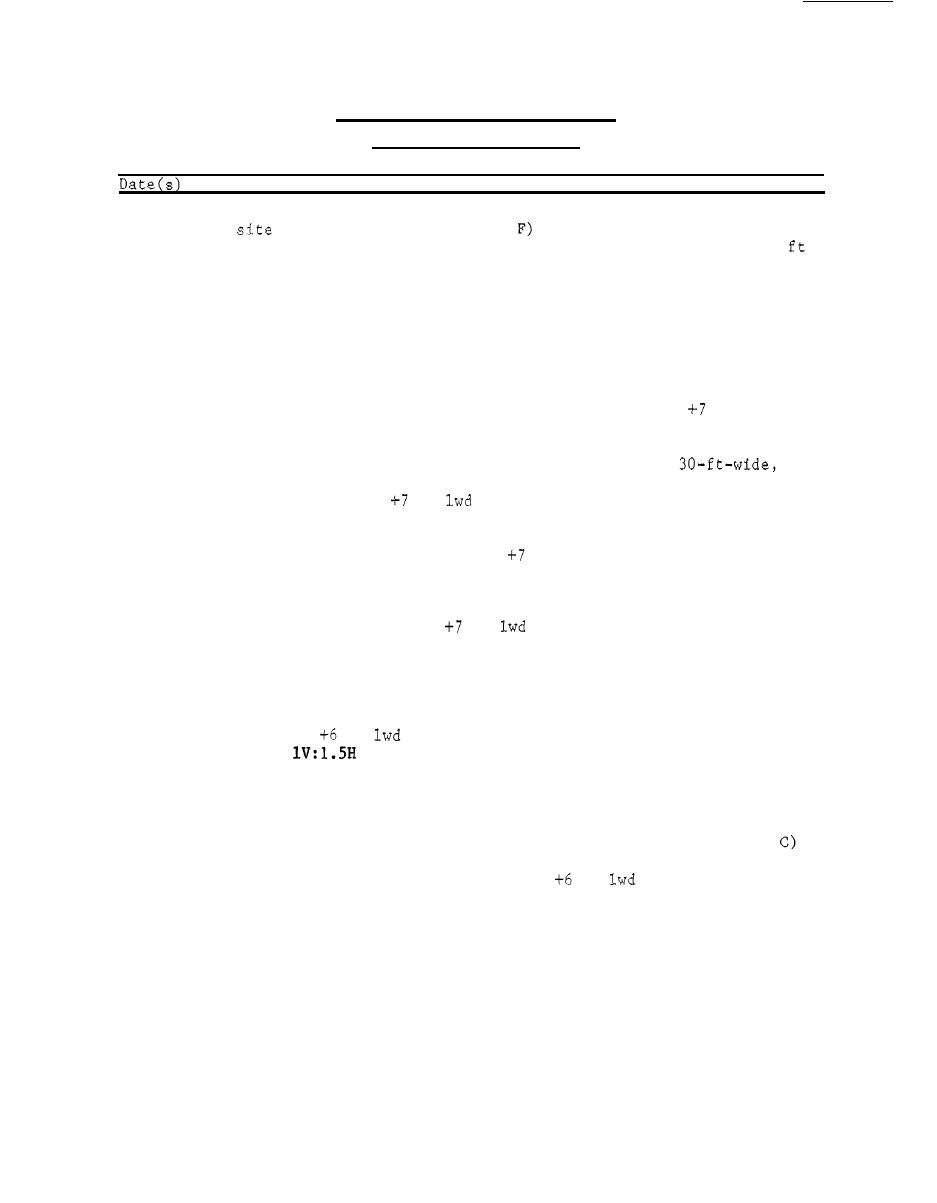
Table 1
Grand Marais Harbor Breakwaters
Grand Marais, Minnesota
Construction and Rehabilitation History
1883-
A 300-ft-long rock-filled timber-crib breakwater was constructed at
1884
(Figure 5, Sections E and
the
during this period. The outer
48 ft of the structure (Figures 5 and 6 , Section E was built 40
)
in width, and the remaining 252 ft (Figures 5 and 6 , Section F)
was constructed 30 ft in width.
A 350-ft-long rock-filled timber crib breakwater was constructed west
1901-
1902
of the first structure during this period (Figures 5 and 6,
I
Section D . The structure was built 24 ft wide.
)
A concrete cap (superstructure) was constructed on the outer 48 ft of
1925
the structure built during 1883-84. The crest el was
ft lwd (Fig-
ure 6 , Section E.
)
1926
A concrete cap (superstructure) was completed on the
252-ft-long structure built during 1883-84. The crest was con-
(Figure 6, Section F.
)
structed at an el of
ft
A concrete cap (superstructure) was installed on the breakwater built
1933
during 1901-02. The crest el was
ft lwd. Heavy riprap was placed
on both sides of the structure (Figure 6, Section D . Also in 1933 a
)
43-ft-long concrete breakwater connecting the east breakwater to
shore was constructed (Figure 5, Section G. The structure was 12 ft
)
wide and had a crest el of
ft
(Figure 6, Section G.
)
Construction of a 921-ft-long rubble-mound inner breakwater was com-
1959
pleted (Figure 5, Section A ) . Cover stone, a minimum of 2 tons, was
placed on the outer 550 ft of the structure, and 1-ton (minimum)
cover stone was placed on the remaining part of the breakwater. The
crest el was
ft
with an 8-ft width. The structure had side
(Figure 6 , Section A ) . The inner breakwaters were
slopes of
model tested (Fenwick 1941, 1 4 )
94.
1972
A 65-ft-long rubble-mound breakwater connecting the shore to an is-
land (Figure 5, Section B) and a 40-ft-long rubble-mound breakwater
connecting the island to the east breakwater (Figure 5, Section
were constructed. These structures were built with stone ranging
ft
(Figure 6 , Sec-
from 5 to 20 tons and had crest els of
tions B and C. Model testing of these structures was conducted
)
(Fenwick 1941).
A survey of the structures revealed spalling of the concrete at sev-
1981
eral locations, particularly on the lakeside of the east breakwater.
The rubble-mound shore connection of the west breakwater required
(Continued)
1
9



 Previous Page
Previous Page
